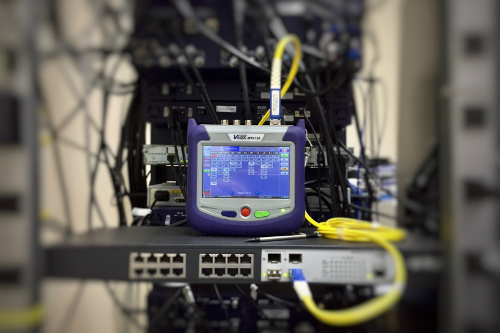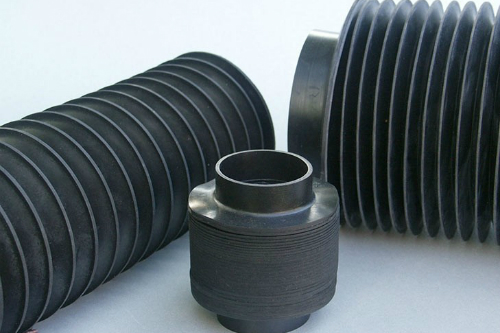Ever since the Industrial Revolution integrated functionality with design and production, the world has changed at an incredibly fast pace. Products that were once expensive, time-consuming, and cumbersome to create have become efficiently and cheaply mass-produced, making them more popular and widely distributed.

But just how far does machine design take away from aesthetics? In many cheaply made, mass-produced products, beauty and durability are sacrificed for cost. Yet aesthetics are often the focal point of engineering anything, so exactly how important is it to preserve aesthetics when designing machines?
What is the Difference Between Functionality and Aesthetics?
The word “aesthetics” comes from the ancient Greek word aisthetikos, which loosely means “to perceive.” When you talk about aesthetics, you are referring to the way someone perceives, or feels about, something. Those feelings come from our senses – how we touch, smell, see, hear, and taste everything in our environment. This is partly why many romantics and writers refer to anything regarding beauty as soft and relaxing, and sheathed in warm, deep colors.
Functionality, on the other hand, is the main point of engineering. Described in writing as hard and unassuming, colored in the cold hues of blues, functionality is deemed impersonal by many. But there has to be a balance in order for functionality and aesthetics to each serve their purpose.
When something is well-designed and pleasing to the senses, many people want to possess it. The functionality of it, rather than detracting from its beauty, often makes it even more valuable. A beautiful couch, without the ability to sit on it, may have value but it won’t have use, and it will become nothing more than decoration with few people concerned about purchasing it.
How Do Manufacturers Ensure Quality?
Manufacturing and engineering are strongly made up of the science of math. They use this science when they create a product, incorporating a formula that measures the mix of quantity and quality until they find the balance that they want. But, quality is hard to measure to everyone’s standards, since quality by definition is qualitative and subjective.
Because of this fact, quality perception often depends on the manufacturer itself. Many companies spend millions of dollars on research studies, hiring people to poll a scientific mix of potential consumers. They use the results of these polls to determine what the majority of their clientele see as aesthetically pleasing.

Balancing Act
One of the most commonly known and easily seen ways that this process occurs over time is through that of motor vehicle design. By lining up the same make and model of a car by the year it was designed, you can quickly see the little changes that the manufacturing company have implemented based on consumer response. Quite frequently, a company will offer multiple design options, then poll a quantity of people with preset attributes to make a final decision as to which design they will implement.
In this method, the company attempts to make a balance between quantity, which they can control by offering only the designs that meet their specifications for cost output, and quality, chosen by the majority of their consumer marketbase. It’s not a perfect science – it never is when you have to integrate aesthetics with engineering. Aesthetics is subjective, engineering is objective.
With engineering, you can work at the problem until you have the answer you are looking for, plugging in numbers into the formula until you achieve the desired result. With aesthetics, the desired result will depend on the person’s perspective, and you will never reach a 100% satisfactory outcome, no matter what the product is, and therefore, you have to reach for the best you can get and work with that knowledge.

Using Machines to Help With Aesthetics
Aside from creating expensive research experiments to determine what the majority of your target market determines the most aesthetically pleasing of your designs, there are other ways that a company can promote aesthetics without sacrificing cost or functionality. Simply implementing policies to ensure that your machines are functioning optimally can help you create the best possible final product. When your valuable machine parts are exposed to harsh abrasives or liquids on a regular basis, they can erode away and cause a reduction in the integrity of the process.
To keep this from happening, a smart business move that many companies implement is the investment of protective rubber bellows to protect their machine way cover and ball screws from being compromised. These rubber bellows also cover the pinch points on a medical lift or scissors lift table. With the right protective rubber bellows in use, mechanical parts can also be concealed to improve aesthetics. When medical equipment or other final products need a part to make them fully functional but those same parts detract from the overall beauty of a finished piece, those protective bellows can conceal the functional aspects that are less pleasing.
Machine protection with equipment like these bellows can help with overall air flow and ducting when it comes to traction of motor boots and engine exhaust and cooling components. Bus bellows can create a flexible seal between two joints needing some relative movement, and lab and meteorology equipment can be given simple protection and dust and light particles. Light-tight and particle isolation with laser or camera bellows, once thought to be impossible, are now made simple and the aesthetics can be improved with these basic machine protection parts.

Functionality and Aesthetics – the Perfect Design
Engineering and aesthetics were once thought to be two entirely separate processes. The cold science of engineering would bring down the warm art of aesthetics, and vice versa. But now, with the process of machine design focusing on functionality, it does not have to be that way.
With the right focus on quality and quantity, and protecting quality as much as possible to preserve aesthetics, the perfect balance can be found that will please even the most discerning of aesthetic palates. Function does not have to be sacrificed for aesthetics, and something beautiful can now be cost-efficient, machine designed, and functional at the same time.


